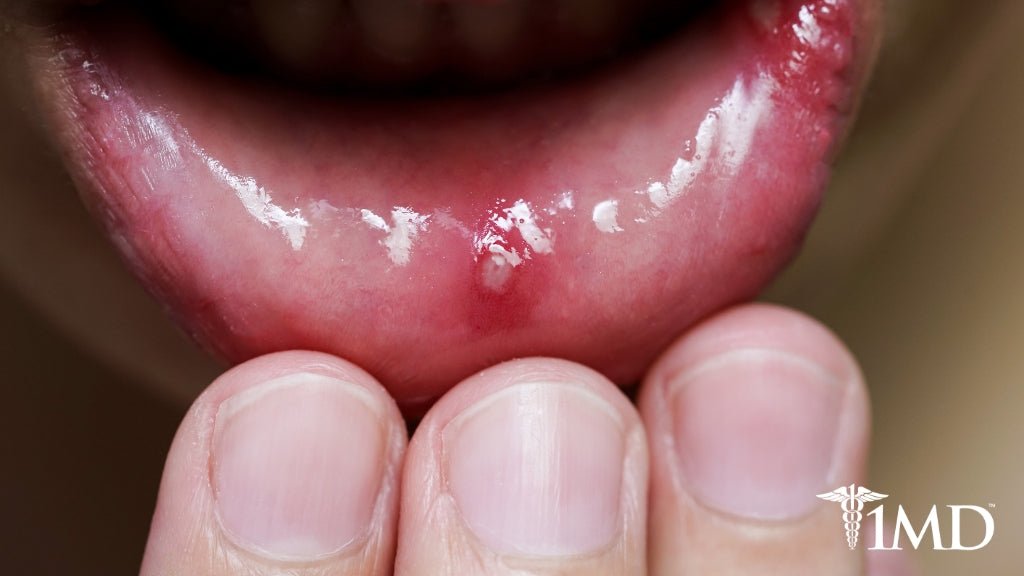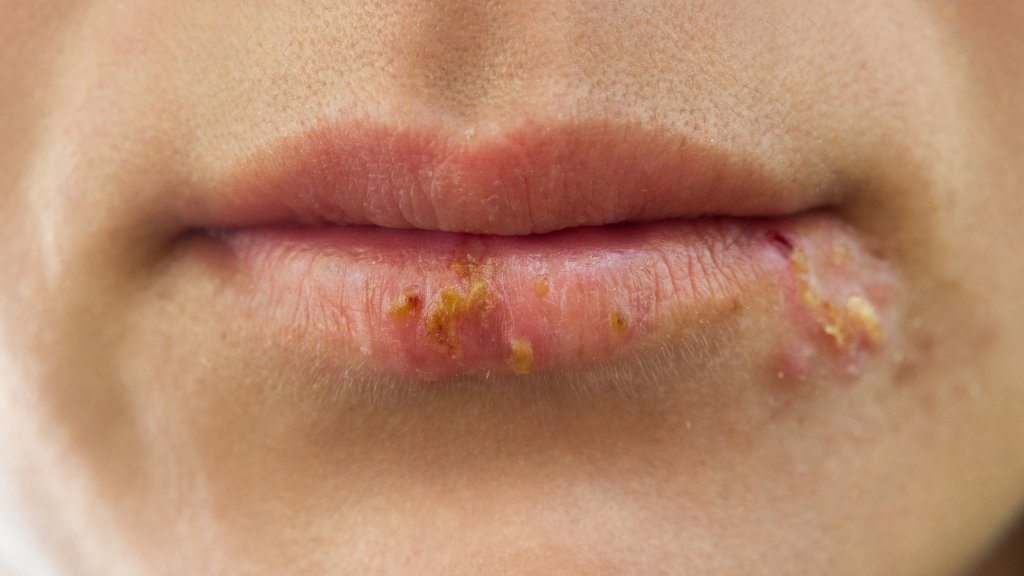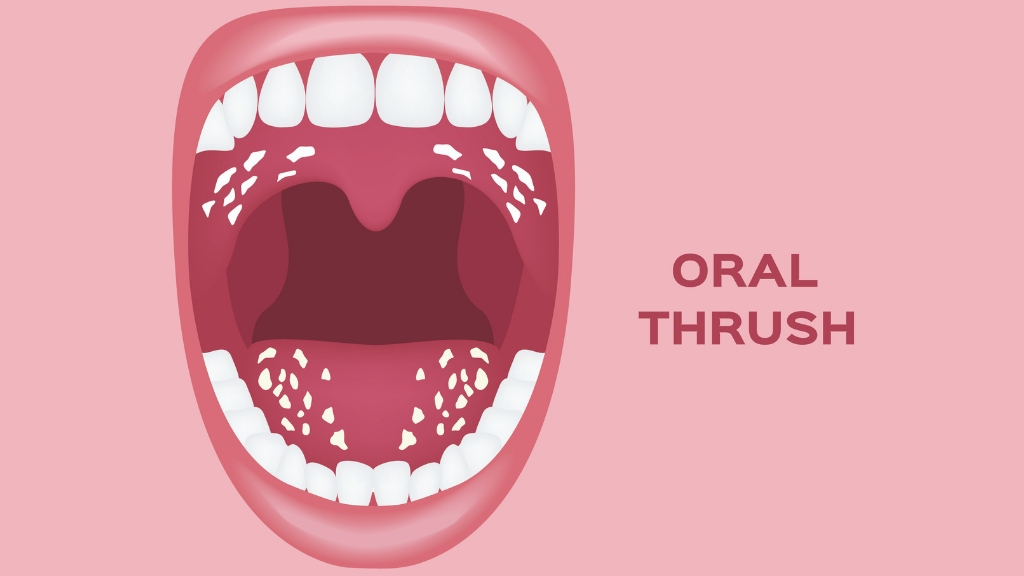How to Tell if It's a Canker Sore, Cold Sore, or More Serious
8 minute read
Most people get canker sores. The small, shallow lesions are ulcers that can force you to chew on the other side of your mouth and sip hot liquids with caution until they heal, but are otherwise harmless.
While canker sores are very common, if you’re worried that it may be something more serious, there are a few things to look out for. Here is what current science has to say about canker sores.
What Is a Canker Sore?
According to Mayo Clinic, canker sores, or aphthous ulcers, are small, round or oval lesions that most often have a white or yellow center with a red border. They form on the inside of the mouth—on the gums, the inside of the cheeks and lips, the soft palate, and the tongue.
While painful and a nuisance, they aren’t contagious like cold sores and aren’t caused by the herpes virus. There are various types of canker sores, the three most common ones being minor, major, and herpetiform.
The vast majority of canker sores are minor ones. You’re probably very familiar with them and their typical characteristics:
♦ Small
♦ Oval-shaped with a smooth edge
♦ Heals within one to two weeks and doesn’t scar
You can also get major canker sores, which are far less common. A major canker sore is:
♦ Larger and deeper than a minor one
♦ Much more painful than a minor one
♦ Round, and can sometimes have an irregular edge
♦ Slower to heal, taking as long as six weeks and possibly leaving scars

Herpetiform canker sores are also not very common, and despite their name, are not associated with the herpes virus. They usually occur later in life and:
♦ Are tiny, like a pinpoint, but occur in clusters of up to 100 that can merge to form one larger ulcer
♦ Have irregular edges due to being made up of many tiny sores
♦ Heal like a minor canker sore, in one to two weeks without scarring
What Causes Canker Sores?
Canker sores are one of the many ailments that have no clear cause, but medical professionals cite several things that may trigger an outbreak, such as:
♦ A minor injury (if you bite your cheek, brushing too aggressively, etc.)
♦ Some food sensitivities, and more serious issues like celiac disease
♦ Shifts in hormones during menstruation
♦ Stress
♦ Oral products that contain sodium lauryl sulfate (a surfactant that makes things like toothpaste foam up)
♦ Not getting enough vitamin B12, folate, or iron
How Are Canker Sores Treated?
Most canker sores heal on their own in a week or two without treatment. But if you have a large or exceptionally painful canker sore, there are treatment options available.
Mouth rinses, topical products, and oral medications are available in both prescription and over-the-counter varieties and can help relieve pain and speed healing.

In the meantime, brush your teeth gently with toothpaste that doesn’t contain sodium lauryl sulfate and avoid foods that are spicy or acidic. You may also want to try some immune-boosting supplements.
Canker Sores or Oral Thrush?
Oral thrush is when creamy white lesions on the tongue or inside the mouth appear due to an overgrowth of the fungus Candida albicans. Just like how the gut has microorganisms, so does the mouth.
A small amount of Candida albicans in the mouth is completely normal, but an imbalance can occur due to factors like a weakened immune system or a round of antibiotics. Unlike canker sores, oral thrush is mostly painless, though there may be some soreness when swallowing and the lesions may bleed lightly if scraped.
Oral thrush symptoms do differ from canker sores, and may include, according to Mayo Clinic:
♦ Slightly raised lesions (cottage cheese-like)
♦ A cottony feeling in the mouth
♦ Loss of taste
♦ Redness or cracking at the corners of the mouth
By appearance alone, if you have large white patches or several white spots on the inside of your mouth, it may be oral thrush instead of a canker sore.
While it’s only a minor problem for most people, if you have a weakened immune system, it could lead to a systemic candida infection. See your doctor or dentist for diagnosis and treatment recommendations. There are also supplements formulated to combat Candida.

Canker Sores or Oral Cancer?
The American Cancer Society estimates that there will be 53,000 new cases of oral or oropharyngeal (throat) cancer in 2019. While oral thrush is not threatening to most people, oral cancer is a much more serious issue that can also be mistaken for canker sores.
If you have a lesion in your mouth that doesn’t heal in the in the two-week period that is typical for canker sores, it may be a sign of oral cancer. Other symptoms include:
♦ Loose teeth
♦ Difficulty or pain when swallowing
♦ Ear pain
♦ A growth or lump in the mouth
Most often, oral cancer begins in the cells that line the inside of your lips and mouth. It’s unclear as to what causes the mutations in DNA that lead to oral cancer, though there are risk factors that include, according to the Oral Cancer Foundation:
♦ Tobacco use
♦ Heavy alcohol use
♦ Human papillomavirus (HPV)
♦ A weakened immune system
♦ Excessive sun exposure to the lips
If you’re concerned that you may have oral cancer, your doctor will perform a physical examination of the area and may take a small sample of cells, called a biopsy, for testing.
Treatments for oral cancer include surgery, chemotherapy, radiation, immunotherapy, and targeted drug therapy. In addition to these, you can make lifestyle changes at home, like quitting tobacco use, as well as start complementary therapies like massage, acupuncture, or relaxation to cope with the side effects of treatment.

| Related: What Science Says About Acupuncture’s Natural Benefits |
The Bottom Line
Canker sores are common, pesky things that often do little more than cause us a bit of discomfort for a week or so. In much rarer cases, a lesion in the mouth, especially one that doesn’t heal, could be cause for concern.
See your doctor if a sore hasn’t healed in two weeks or you’re experiencing any of the other symptoms of oral cancer. In the meantime, ensuring your immune system is always in optimal health can help.












